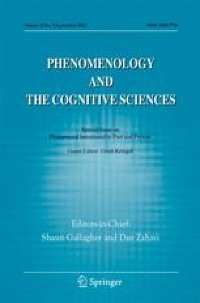This article on teleosemantics may be relevant.
Summary made by Quivr/GPT-4
This document is a scholarly article written by Guido Baggio, a professor at the Department of Philosophy, Communication, and Media Studies at Roma Tre University in Rome, Italy. The article is titled “Gesture, meaning, and intentionality: from radical to pragmatist enactive theory of language.”
The article presents an argument in favor of a pragmatist enactive approach to action, cognition, and language. This approach provides a continuous view that complements the perspective presented by Radical Enactivists (RECers) on how contentful cognition and language may have emerged in nature.
The author specifically focuses on Mead’s pragmatist theory of gesture to support this argument. Mead’s proposal allows the transition from gestural interaction to symbolic language as strictly intertwined with the emergence of contentful cognition from contentless cognition.
The author also critically examines Wundt’s theory of language and consciousness, pointing out its fundamental ambiguity. Wundt’s theory is criticized for relegating emotions and volitions to the original immediacy of unanalysed experience, thus giving them a purely formal value.
The author also discusses the interactions between language and sensory-motor systems at the ontogenetic level, which is still a topic of discussion. While it is widely accepted that action-perception circuits are crucial for semantic processing and that populations of neurons in motor systems have an effect on action-related word recognition, not everyone agrees that there is a link between the semantic processes of motor verbs and motor imagery.
The article argues in favor of a pragmatist enactive interpretation of the emergence of the symbolic and contentful mind from a basic form of social communicative interaction in which basic cognitive capacities are involved. The author suggests that this approach can help to overcome the distinction between a content-less intentionality and a content-involving intentionality, i.e., a semantic propositional intentionality.
In summary, this document is a scholarly exploration of the theories of language and cognition, arguing for a pragmatist enactive approach that sees the emergence of symbolic language and contentful cognition as intertwined processes rooted in basic social communicative interaction.


